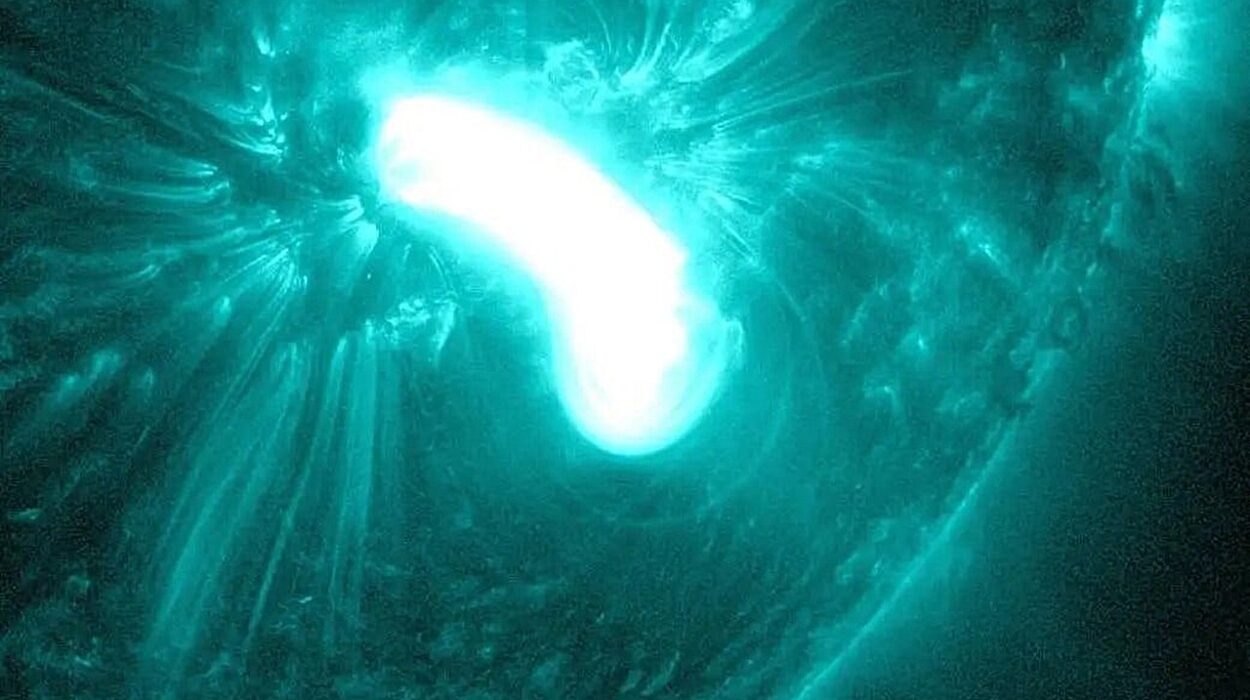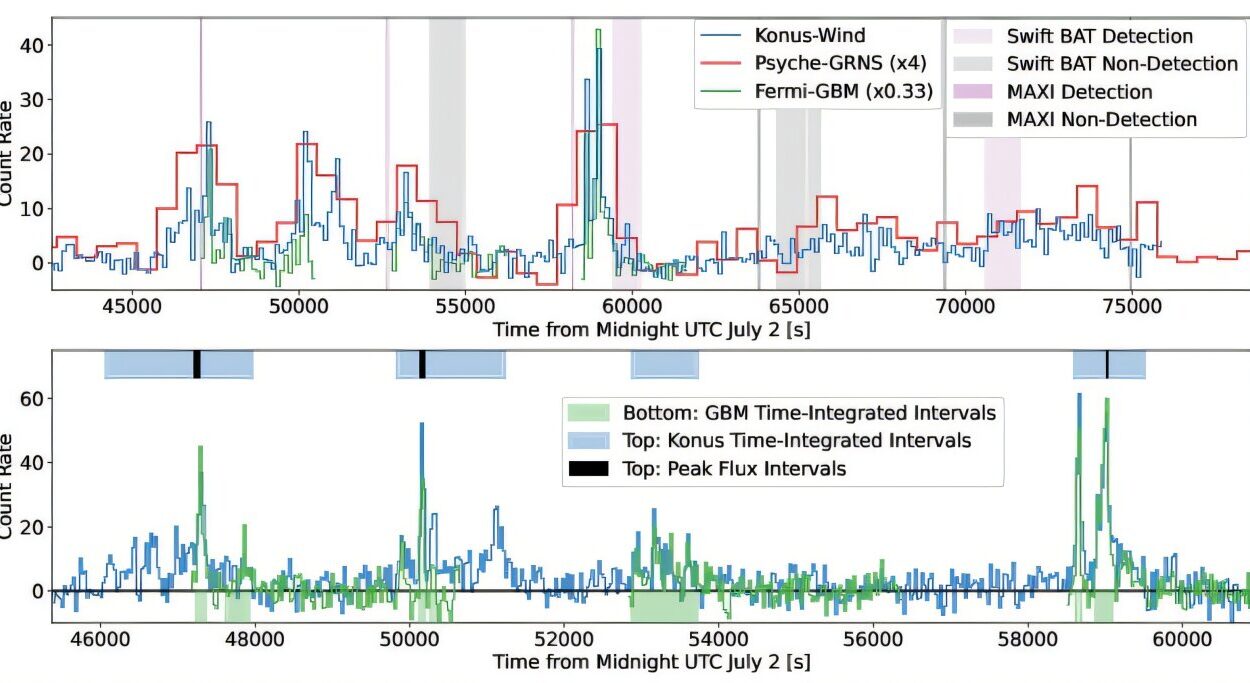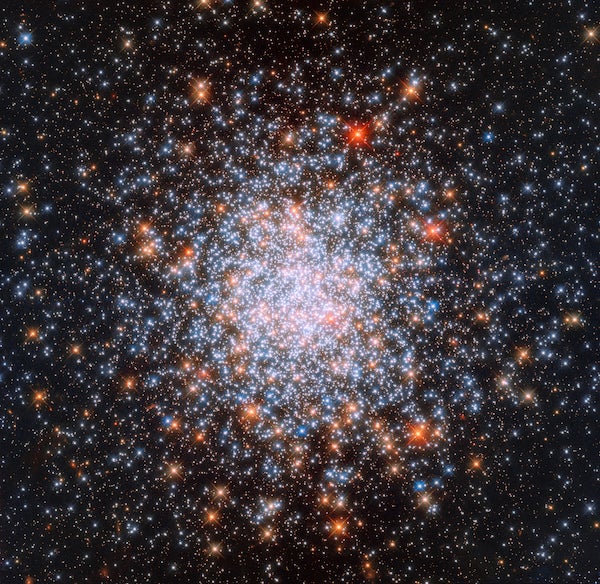For decades, scientists have been puzzled by one of the most fascinating features of Mars: its ancient magnetic field. Unlike Earth, where the magnetic field is globally uniform, Mars has a distinct magnetic imprint that is disproportionately concentrated in its southern hemisphere. This anomaly has long baffled planetary scientists. After all, why would the magnetic field, which once shielded Mars’ thick atmosphere from the solar wind, be so lopsided? New research from the University of Texas Institute for Geophysics (UTIG) provides an intriguing answer, suggesting that the southern-hemisphere dominance of Mars’ magnetic field could be due to the planet’s unique internal structure.
A Glimpse into Mars’ Ancient Past
Mars, much like Earth, is believed to have once had a strong and active magnetic field. In its early history, this field would have been crucial in protecting the planet’s atmosphere from the solar wind—a constant stream of charged particles emitted by the Sun. Without this protective shield, the atmosphere would have been stripped away over time, leading to the harsh and barren Martian environment we see today.
However, unlike Earth, Mars’ magnetic field doesn’t cover the entire planet. Instead, remnants of this ancient magnetic field are concentrated in the southern hemisphere, while the northern hemisphere shows very little evidence of past magnetic activity. This odd asymmetry has puzzled scientists for years.
A key to solving this puzzle lies in understanding the structure of Mars’ core, and a recent breakthrough study sheds new light on this mystery. The study, led by Chi Yan from UTIG, proposes a bold new theory: Mars’ magnetic field may have been hemispheric in nature, with the southern half of the planet bearing the brunt of the magnetic activity. This one-sided magnetic field could explain the distinctive imprint that remains on Mars today.
The Core of the Matter: Liquid vs. Solid
The heart of the new theory revolves around Mars’ core. For many years, scientists assumed that Mars’ core, like Earth’s, was made up of a solid inner core surrounded by a molten outer core. This assumption was largely based on the magnetic field models of Earth, where the movement of molten iron in the outer core generates a global magnetic field. Mars was thought to follow a similar mechanism.
However, new findings from NASA’s InSight lander challenged this idea. The InSight mission, which studied Mars’ interior, found that the planet’s core is likely composed of lighter elements than expected. This surprising discovery suggested that Mars’ core might not be solid, as was previously assumed. In fact, the core may be mostly molten, much like the outer core of Earth. This finding has profound implications for understanding Mars’ ancient magnetic field.
In the new study, Chi Yan and his team postulated that if Mars’ core were indeed molten—both today and 4 billion years ago when the magnetic field was active—it could have facilitated the development of a hemispheric magnetic field. The researchers’ hypothesis suggests that with a liquid core, it becomes easier to generate a one-sided magnetic field, as opposed to the globally symmetric field that we observe on Earth.
A Simulation of Mars’ Early Days
To test this idea, the team used advanced computer simulations to model the behavior of Mars’ core and mantle during its early history. Their simulations focused on a crucial factor: temperature differences in Mars’ mantle. The team proposed that the northern hemisphere of Mars was slightly hotter than the southern hemisphere, which could have caused a temperature gradient across the planet. This gradient would allow heat to escape more efficiently from the southern hemisphere, where the molten core would be concentrated, driving a dynamo mechanism that generated a magnetic field.
A dynamo is a process that generates a planet’s magnetic field through the movement of molten metal in the core. On Earth, this process results in a magnetic field that extends across the entire planet. On Mars, however, the researchers found that this process could have been restricted to the southern hemisphere due to the temperature differential between the northern and southern halves of the mantle. In their simulations, the team found that the southern half of Mars could have developed a strong magnetic field, while the northern hemisphere remained nearly devoid of magnetic activity.
The results were striking. The researchers successfully created a model where Mars’ magnetic field was concentrated in the southern hemisphere, matching the magnetic imprint seen today on the planet’s surface. This finding offers a compelling explanation for the puzzling one-sided magnetic field.
The Implications of a Molten Core
The study’s results have far-reaching implications for our understanding of Mars’ early atmosphere and its ability to sustain life. If Mars’ magnetic field was indeed hemispheric, it suggests that the planet’s dynamo was less efficient and shorter-lived than Earth’s. This could mean that Mars’ atmosphere was more vulnerable to being stripped away by the solar wind. In turn, this would support the idea that Mars lost its thick, protective atmosphere relatively early in its history, making it a much harsher environment than it might have otherwise been.
Sabine Stanley, a co-author of the study and a professor at Johns Hopkins University, emphasized that if Mars’ core was molten, as the InSight data suggests, it would have likely been molten 4 billion years ago when the planet’s magnetic field was active. This new understanding of Mars’ internal structure also suggests that the planet’s dynamo mechanism may have been weaker and less stable than Earth’s, which could have further contributed to the loss of its atmosphere.
Challenging Long-Held Assumptions
The research also challenges a commonly accepted theory about the disappearance of Mars’ global magnetic field. Until now, many scientists believed that asteroid impacts in the northern hemisphere could explain the asymmetry in Mars’ magnetic field. According to this theory, asteroid impacts in the past may have disrupted the planet’s magnetic field, leaving behind the imprint we see today. However, the new study suggests that Mars’ magnetic field may have been naturally lopsided from the outset, offering an alternative explanation for the planet’s hemispheric magnetic anomaly.
Doug Hemingway, a planetary researcher at UTIG who was not involved in the study, noted that understanding Mars’ magnetic field is crucial for future exploration. “Mars is naturally interesting to look at because it’s like Earth in some ways, and it’s the closest planet that we can imagine actually setting up shop on,” he said. “But then, it’s got this dramatic hemispheric dichotomy where the topography, the terrain, and the magnetic field of the northern hemisphere and southern hemisphere are dramatically different. Anything that gives a clue to what could account for some of that asymmetry is valuable.”
Why Mars’ Magnetic Field Matters
Understanding the history of Mars’ magnetic field is not just a matter of academic curiosity. It has significant implications for the future of space exploration, particularly for the possibility of human colonization. A strong magnetic field is essential for protecting a planet’s atmosphere and shielding its surface from harmful solar radiation. Without a magnetic field, a planet’s atmosphere can be stripped away, as happened on Mars, making it an inhospitable environment for life.
By studying Mars’ magnetic history, scientists can gain valuable insights into the planet’s past habitability. This research could help inform future missions to Mars, providing a deeper understanding of the planet’s capacity to support life—past, present, or future.
Looking Forward
The findings from this study open up new avenues for exploring the mysteries of Mars. The possibility that Mars once had a hemispheric magnetic field adds a fascinating layer to our understanding of the planet’s history. As more data is gathered, particularly from future missions like NASA’s Perseverance rover and the upcoming Mars Sample Return mission, scientists will continue to refine our knowledge of Mars’ interior and its ancient atmosphere.
In the end, the study’s results highlight just how much we still have to learn about our neighboring planet. Mars may no longer have a protective magnetic field, but understanding the nature of that lost shield brings us one step closer to uncovering the secrets of Mars’ past—and its potential future.
Reference: C. Yan et al, Mars’ Hemispheric Magnetic Field From a Full‐Sphere Dynamo, Geophysical Research Letters (2025). DOI: 10.1029/2024GL113926






